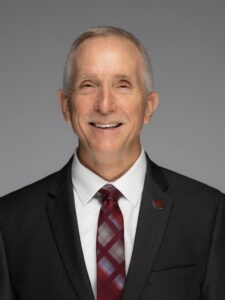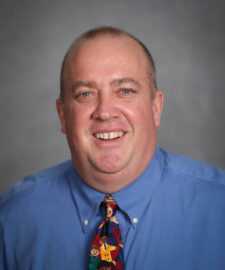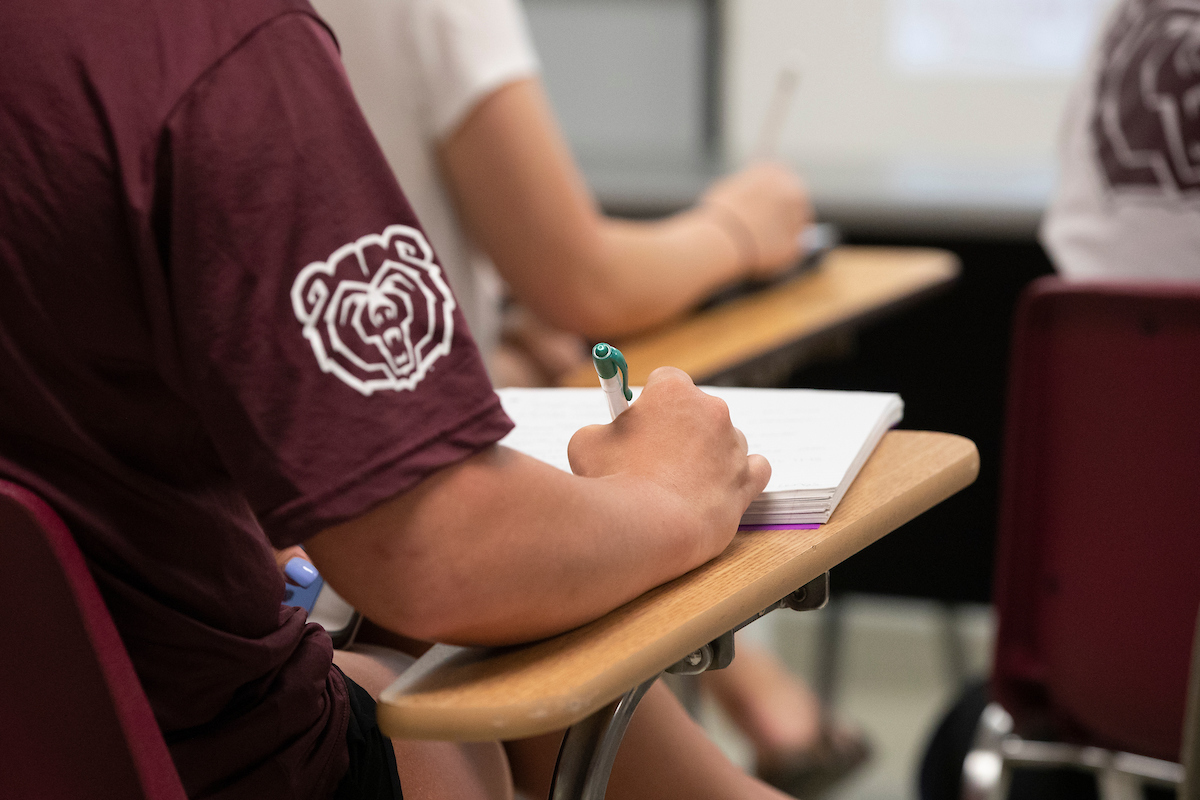Anyone who’s advised students is familiar with the fears and frustrations that can swirl around gateway courses, such as foundational writing and Math 101. These feelings are often intensified by the fact that gateway courses exert significant influence on students’ year-to-year retention — and overall success in college. Because of this, faculty who teach gateways may feel torn between their courses’ learning goals and their desire to see students progress toward degree completion. But the research team at EAB suggests that this is a false binary; a course’s academic rigor may actually play a smaller role in student success than the course’s design does.
Dr. Patrick Sullivan, associate professor of mathematics, has found this to be true. He spoke with Provost Dr. John Jasinski about how he’s retooled his approach to Math 101.
Q&A

John Jasinski: What interests you most about teaching math?
Patrick Sullivan: I want students to love and appreciate mathematics — and not let their fear of math stop them from accomplishing their goals.
You’ll often hear people say: “I stopped liking math when…” But few have a follow-up math redemption story. Life is about redemption, and math plays such a role in how we perceive ourselves as learners.
We’re a university! We are where students come to explore their dreams without the tethers that have held them down before. We can be positive catalysts in their lives, as well as help them develop the mindset to be successful in all their courses. I love playing a small part in these stories.
On Overcoming “Math Trauma”
JJ: What are you learning about students in Math 101 in terms of their predispositions and approaches to learning?
PS: 101 students’ relationship with math is complicated. If they’re in 101, they know their standing in the math game. The first day, I like to say: “Stand up if you like math.” I think this year — out of 70 students — two stood up. I then asked them to stand if they felt anxious about the class, and almost everyone stood. These students have dreams, and many know that to realize their dreams, they must overcome their struggles with math.
Over a third of students have indicated that they’ve experienced some form of “math trauma.” They may have had a personal experience, like sickness or a family death, that disrupted their learning and resulted in them being placed in a lower math class. Or they may have felt marginalized or punished — something like not getting a treat because they didn’t know their multiplication facts. Or they may have tracked into lower-level math classes, away from their peers. The challenges these students face in learning mathematics are deeply rooted and persistent. Think of something that you haven’t had success doing and imagine that you had to keep doing it, year after year — knowing that your “math story” wasn’t changing.
Current research shows that the most common challenges these students face are rooted in their understanding of fraction concepts and multiplicative reasoning. That means the basic building blocks are missing, but these students have still persevered.
“Current research shows that the most common challenges [students who have struggled with math] face are rooted in their understanding of fraction concepts and multiplicative reasoning. That means the basic building blocks are missing, but these students have still persevered.”
—Dr. Patrick Sullivan
On the Role of Active Learning

JJ: Why — and how — are you connecting with students and helping them learn?
PS: It starts with building relationships. Yes, technology has enabled more connections, but we seem to have less connectiveness. Everyone needs to feel seen, to know that they have value and purpose. There are so many new experiences for them on this campus. They may be away from everyone they know; they may be trying to break a generational cycle of poverty. We have many chances to make a difference in our students’ lives.
Research suggests that, if we want to change a student’s relationship with math, active learning is the way to go. For example, a group of researchers led by Scott Freeman conducted a metanalysis of 225 studies that reported data on examinations scores or failure rates in undergraduate STEM courses; they specifically compared the data under traditional lecture formats to active learning formats. They found that students in classes with traditional lecturing were 1.5 times more likely to fail than those in classes with active learning, regardless of class size. I’m a fan of explicit instruction and problem-based learning, but there’s such power in getting students out of their seats to collaborate and reflect on what they are learning.
We must also go back to go forward, which means deepening their understanding of number concepts. Research shows that these concepts, especially ones related to fractions, are highly associated with overall math achievement and success in algebra. It’s hard to move forward without strengthening the foundation. One of the elements of Vosniadou’s conceptual change framework is that “knowledge acquisition is not always a process of enriching conceptual structures, but a radical reorganization of what is already known.” Part of this radical reorganization is a shift from just getting answers, which technology can give us — “Hey Siri! What is two-thirds of nine-tenths?” — to understanding why these answers make sense.
JJ: Have you seen results?
PS: Success rates in 101 have increased, as have success rates in ensuing math classes. Plus, we’re seeing changes in attitudes toward math. Students tell us that they feel — for the first time in a long time — they’re back in the math game. Two students who told us about past math failures are now peer mentors for the course.
On the Importance of “Finding Your Team”
JJ: Is this part of a broader approach in your department? And do you think there are ways other academic disciplines might implement these ideas?
PS: It is all about imagining possibilities. Last semester, our department implemented Listening Lunches. We’d order pizza and offer an open invitation for students. We usually had 10 or 12 attend, and we’d ask them to tell us about their experiences with math — not just in our classes, but their whole math story. We just listened and took notes. A few of the stories brought tears to our eyes because many of us could relate. These students wanted to succeed and do well in math, but they didn’t know how to change their story. Many expressed that they felt teachers had given up on them.
We gained so much by sitting down with students and listening. I think I’ve learned more about student learning in the past two years than I did during my first 30 years in this profession! It takes work, but it’s invigorating.
Find your team! The key to change is getting a group of people together who are willing to imagine possibilities, implement these possibilities and weather the storms along the way. You’re not going to get it all right the first time — or the second, or the third! Just keep moving forward. We like to focus on two questions: What have we learned about students’ understanding of the content? And how can we use what we’ve learned to improve instruction?
We are still growing and learning so much.
Around Campus…

On August 18, the campus community rejoiced when we received the largest one-time gift in Missouri State history. With this donation from the C.W. Titus Foundation, given in memory of Judith Enyeart Reynolds, we’ll replace the Art Annex.
“It’s hard to overstate the impact this will have on the program and on our students’ careers,” says Dr. Christopher Herr, interim department head of theatre and dance. “We have top-flight programs — really wonderful instruction, performance opportunities and students — and this donation will allow our facilities to match the quality of the programs. I’m particularly excited for the design, technology and stage management students because it will give them a chance to work in spaces that are like the spaces they’ll be working in once they leave the university.”

